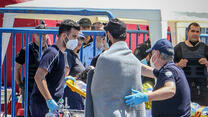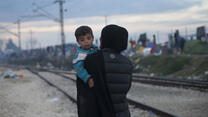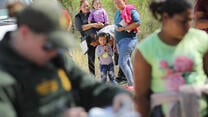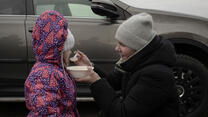The world is in the midst of a global displacement crisis, with 65 million people forced to flee their homes.
Since early 2015, over one million fleeing conflict and crisis have transited through Greece or Bulgaria to seek safety and a better future in Europe—nearly 100,000 of them were unaccompanied or separated children (UASC).
In response to this unprecedented number of refugees and migrants, in March 2016, countries along the “Balkan Route” closed their borders and the European Union (EU) and Turkey agreed on a deal in an effort to curb and discourage future arrivals.
While numbers have decreased since March 2016, these efforts have not stopped migration but rather forced highly vulnerable people, including UASC, to take increasingly risky measures to travel from Turkey to Europe or to leave Greece and continue their journeys farther into the EU undetected.
It is estimated that over 1,300 UASC are currently at risk of exploitation, violence and trafficking throughout the region.
This brief is a joint effort by 12 national and international humanitarian agencies to raise awareness about this ongoing but hidden crisis for some of the world’s most vulnerable children, specifically focusing on UASC in Bulgaria, the Former Yugoslav Republic of Macedonia (FYROM), Serbia and Croatia.
To improve the overall response for these children, all stakeholders must address the:
- Insufficient and unreliable data or information management on UASC within the region;
- Lack of options for safe accommodation and comprehensive services in line with each child’s best interests;
- Lack of access to legal pathways and lack of cross-border case management to improve continuity of care and protection; and
- Exposure to exploitation, violence and trafficking, including as a result of smuggling and violent pushbacks.
Recommendations
To the European Commission
- Re-prioritize the Instrument for Pre-accession Assistance to better support Balkan states in providing comprehensive care to UASC, upholding the Commission’s 10 Principles of Integrated Child Protection Systems.
- Encourage EU member states to employ funding from the Asylum, Migration and Integration Fund to address shortcomings in reception facilities and provisions for UASC.
- Introduce a Common Guardianship Strategy as a matter of priority, including the establishment or development of existing networks to meet international guidelines/best practice.
- Take all available measures to ensure EU member states meet commitments under EU law regarding the transfer of UASC, such as relocation, family reunification and the Dublin Regulation.
- Prevent and hold to account any human rights and child rights violations in member and candidate states.
To EU member states
- Support enhanced provisions for UASC in ongoing negotiations on the revision of the Common European Asylum System, including on special procedural guarantees, early appointment of guardians and an expanded definition of family members.
- Redouble efforts to implement and facilitate existing legislation to ensure safe, legal and effective routes to international protection, including expedited family reunification (including from non-EU states), resettlement, humanitarian visas or private sponsorships, prioritizing and including all children with no discrimination.
- Detention is never in the best interests of the child, even as a last resort. Put an end to the detention of children.
To Balkan host governments
- Revise existing asylum policies to stipulate mandatory prioritization of processing for UASC and adopt swift mechanisms to facilitate the practical implementation of national policies on UASC.
- Put an end to the detention of children.
- Design and disseminate policies, protocols, or SOPs relating to the identification of children and any particular vulnerabilities, and ensure their implementation is monitored and evaluated systematically.
- Immediately establish measures to ensure all children arriving or stranded are registered/ documented, assigned well-trained guardians, and granted prioritized access to international protection procedures.
- Carry out individual assessments of each UASC to determine protection needs, possible legal options (e.g., family reunification) and to identify particularly vulnerable individuals.
- Ensure qualified, adequately trained guardians are appointed upon identification and present at all stages of the international protection procedure and associated to all decisions on child protection measures.
- Ensure all children have access to informed and participatory BIA and BID.
- Provide children with regular legal support and access to relevant information in their native language.
- Establish age and gender appropriate shelter for UASC only, and improve the conditions in existing shelters in line with the Children Protection Minimum Standards 2 as well as the feedback from consultations with UASC.
- Establish rigorous data collection schemes to capture UASC’s access to services and international protection procedures, and consider harmonizing data collection methodologies and tools with neighboring countries.
- Ensure staff from all agencies caring for/working with UASC receive advanced training on BIA and BID, children’s rights, child safeguarding, confidentiality, privacy and holistic age assessment.
To national and international humanitarian agencies
- Ensure better coordination between all humanitarian actors in designing programs, supporting host governments, facilitating cross border cooperation, and generating and disseminating relevant data at national and transnational levels, including on case support.
To donors
- Make necessary resources available to both host governments and NGOs to appropriately respond to the needs of UASC in each country, including for shelter and alternative care, staffing, and programs to provide an appropriate response, in line with Child Protection Minimum Standards and respecting child rights.



